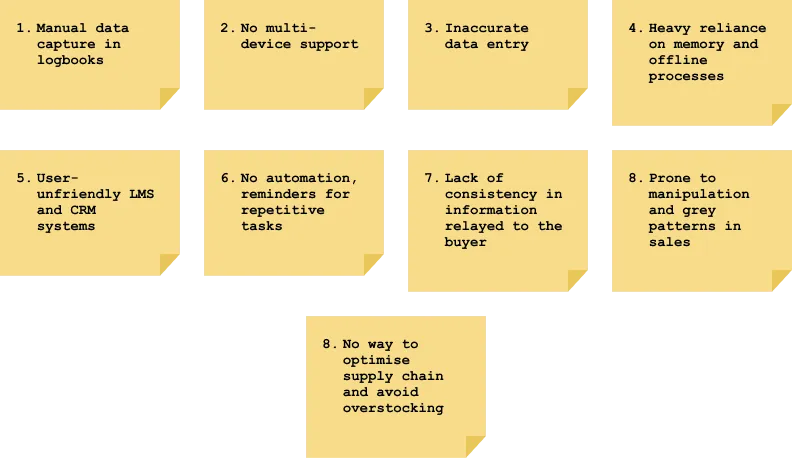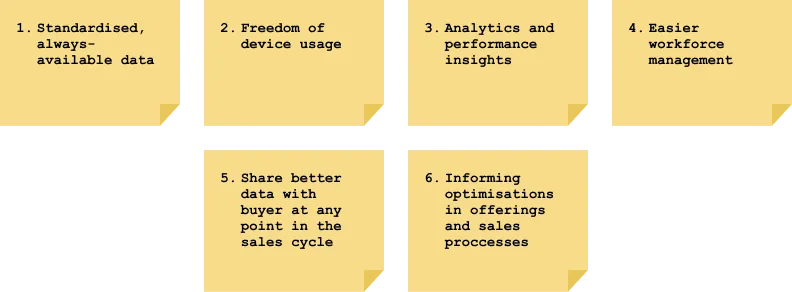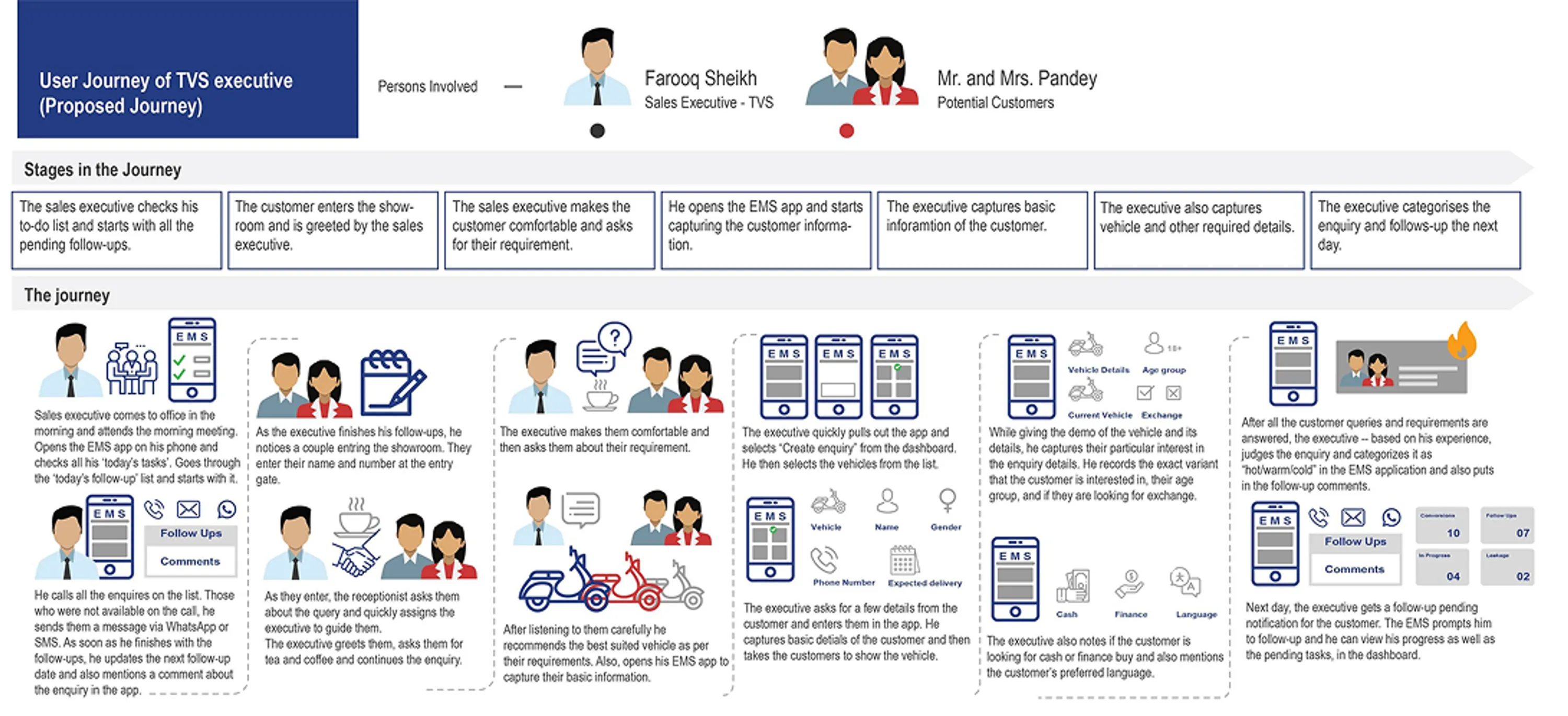📝
This is a summary of this project. View the strategy board if interested!
Challenges
Smartphones present a huge medium to reach two-wheeler vehicle buyers, and revolutionise the way these vehicles are marketed and sold to them.
Combining devices already owned by most buyers and sales representatives with intuitive systems that take care of boring, error-prone and repetitive tasks means both parties can spend more time with the vehicles they’re in the market for.
Selr is the system that brings the capabilities that simplify the sales experience, boosts sales, reduces churn, while unlocking a new dimension of data analysis; a win for everyone.
Goals
| Goal 1 | Digitise manual processes to save time |
| Goal 2 | Provide a seamless experience and avoid frequent context switching |
| Goal 3 | Increase buyer trust and confidence in the experience |
Concept
- Recording, organising, prioritising leads, automating follow up, booking and feedback reminders and much more.
- Helping make the process transparent and easy to navigate or everyone.
- Leveraging data toward informing marketing, sales, service and launch decisions.
💡
Right click, or long press, and select “Open image in new tab” for images that are a bit too small to read properly.
Who to focus on?

What problems are being solved?

Why would the service be sought?

Experience Map

User Flows & Wireframes
View all wireframes and flows here.
The design rationales (insights averaged across testers):
- Build a comprehensive user flow for each user role based on data received while preparing the experience map and through user interviews.
- Pick well-recognised design patterns that can be adapted easily to the various users’ mental models.
- Scope out and build re-usable atomic design components to for scalability and consistency across the platform.
Metrics
The improvement areas for the wireframes were measured with these metrics:
- Average time taken to complete a flow.
- Lead conversion rate vs enquiry completion rate.
- Drop rate for each decision step.
- Data left most frequently unentered, or at its defaults.
- Data most frequently edited or changed.
- Percentage of enquiries left unattended after 90 days.
Feedback
This feedback was collected from moderated 1-1 tests with potential users, as well as from clickstream analytics. View relevant questionnaires and insights here.
The goals behind doing so at this stage:
- Understand how users engaged with each flow and make relevant interface and experience tweaks.
- Discover emergent mental models or interaction patterns.
- Discover sub-optimal interactions and friction-causing heuristic issues.
Takeaways
- Context-aware defaults were required to reduce the effort required to complete data heavy flows.
- Every step of the journey required to be displayed as obviously as possible to avoid repeating previous steps.
- Efficiency increased when highly repetitive and rote tasks were automated.
- Many users formed their own unique ways of navigating flows, which needed to be respected and adapted to.
- Video tutorials were by far the best way to on-board a large grup of executives at once due to their self-paced learning advantage.
Outcomes
Deliverables
- Strategic analysis board
- Click-through wireframe prototype
- Iterative wireframes
- Full case study
Learnings
- Deep insight into small and large scale two wheeler presales, sales and post sales activities.
- Balancing data gathering with contextual relevance so as to keep the user engaged.
- Incentivising users to move from traditional offline administrative processes by linking incentives and benefits to core online activities.
- Ins-and-outs of complex dealer-brand relationships.
- Balancing specific good-to-haves with overall usability and performance.
- Continually incorporating feedback from stakeholders and users in a highly agile development cycle.
Future Scope
TVS Motor Company continues to expand the role of this system into it’s every vertical:
- Addition and sales of new vehicles and vehicle accessories.
- Micro-animated interactions and rich vehicle images, display and sharing of AR comparators.
- Continuous and iterative improvement of the design system.
- Creation of alternate white-label branding, enabling the licensing of the system to other interested businesses.
- dding self-service and e-commerce capabilities, allowing end-customers the ability to self-service and carry out research and vetting functions in the absence of any sales executive.
Additionally, feature additions have been proposed, such as:
- Phase wise segregation of the user’s journey, from enquiry, to test ride, to booking, to delivery, to post-sales and service.
- Multimodal AI autofill assistant to fill in uncaptured data from text to speech or inference from already present data.
- User engagement through leaderboards, performance linked incentives, referral affiliate codes and more.
That’s it!
Thanks for going through this case study; however, this is a super short version. View the strategy board if interested!